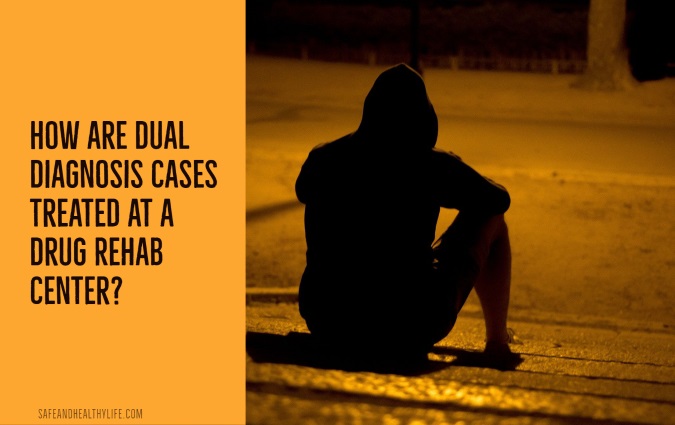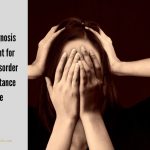
A dual diagnosis happens when an individual is diagnosed with substance addiction in Massachusetts and another mental illness at the same time. These mental illnesses could be the root cause of chronic substance misuse or they could be caused by the continued use of substances.
According to the National Alliance on Mental Illness, dual diagnoses (also called co-occurring disorders) are present in about a third of all Americans with a mental illness. In severe cases of mental illness, about half are also struggling with substance misuse.
Day-to-day experiences at dual diagnosis treatment centers in Dallas seem to bear this out, as about a third of Americans with alcohol use disorders and over half of those with drug use disorders report also having a mental illness.
Can a dual diagnosis be treated at a rehab?
While dual-diagnosis cases are extremely common, not all substance rehab and treatment centers can handle them adequately. Some rehab centers focus strictly on medical detox or some other treatment that does not necessarily involve treating psychiatric conditions.
Fortunately, most drug and alcohol rehab centers in the Dallas metro area are at least able to provide access to a clinician that can diagnose co-occurring disorders. There are also a few that specialize in treating dual-diagnosis cases.
How are dual-diagnosis cases treated?
Each dual-diagnosis case tends to be unique, which means clinicians will have to tailor an approach suited for each patient. In most cases, an “integrated intervention” approach will be taken to treat all diagnosed disorders at the same time.
In most cases, this process will largely resemble the standard process for treating substance use disorders. The steps in treating dual-diagnosis cases are usually as follows:
1. Detoxification
Detoxification or withdrawal management is usually the first step taken for treating any substance use disorder, regardless of the existence of a dual diagnosis.
This initial process is meant to help stabilize the patient so that they can receive counseling and therapy later on.
During this process, patients will be given the appropriate medical intervention while their bodies expel lingering traces of substances. This process can take up to two weeks, depending on how the patient responds.
This process can be done as an outpatient or inpatient procedure. However, inpatient detoxification tends to be safer and more effective as treatment center staff can monitor a patient’s condition much more closely.
Inpatient treatment also significantly reduces the opportunities and triggers for relapse. If the patient has a suicide risk or has a severe substance use disorder, inpatient treatment may also be the best option.
2. Inpatient/residential rehabilitation
Even if most of the chemical traces of drugs and alcohol have been expelled from the body, strong cravings are likely to remain, thanks to the new pathways in the brain formed by habitual drug-taking.
The process of normalizing the brain’s pathways can take several months or years, depending on the progress of the patient.
After the initial detox, patients that want the best chance at a long-term recovery should consider inpatient treatment. It may also be recommended for individuals that are considered a risk to themselves and others.
3. Counseling and therapy
At rehab centers, patients with a dual diagnosis will receive counseling and therapy to help them cope with their cravings. Cognitive-behavioral therapy is a mainstay for the treatment of substance use disorders as well as other psychiatric illnesses.
In most cases, therapists will use this approach to help patients better cope with their co-occurring issues, particularly in regard to self-defeating thinking.
4. Medication
Patients may also be given medication to help deal with their co-occurring mental health issues. Prescribing medications can be a delicate balancing act, as many of the standard drugs for dealing with psychiatric disorders may be habit-forming as well.
At the same time, some patients may continue with maintenance medication to help wean them off their drug of choice. This may begin through the detox process and last for as long as necessary.
5. Support groups
While a mainstay for single-diagnosis substance use disorder cases, support groups can be more challenging, though not impossible, to arrange for those with a co-occurring mental health issue.
Regardless, support groups can be an essential component for staving off feelings of isolation that are common in individuals recovering from mental health issues.
Support groups are not a realistic way of dealing with a dual diagnosis or even a single diagnosis by themselves.
Individuals stand a better chance of getting more out of them if they have had a proper detox and individual counseling as well.
Group therapy can continue after rehab as well. Continued group therapy after rehab can help with relapse prevention and long-term recovery, especially if the issues with the co-occurring disorder are resolved as well.
6. Alternative therapy
Clinicians may also recommend alternative therapy approaches to supplement conventional treatments. Popular supplemental therapy for dual diagnosis includes exercise, outdoor hikes, art, and yoga among others.
The effectiveness of different approaches varies between individuals which makes it important to try different ones when possible.
Summary
Dual-diagnosis cases require a bit more consideration compared to those where only a substance use disorder is present.
Thankfully, finding a rehab center that treats dual-diagnosis cases is much easier today than it was in previous decades.
In North Texas, directory services such as Dallas Drug Treatment Centers make finding a specialized rehab facility easy.
Taking the time to consult a psychiatrist before you begin treatment can also make it easier to learn what kind of treatment approaches might work for you or your loved one.
About The Author:
Briana Jones is a digital marketer from the Philippines. She is passionate about living a healthy lifestyle and finding ways to achieve modern comforts in a sustainable manner. In her free time, you can find her prepping meals in the kitchen or exploring new running routes in the neighborhood. She also loves traveling.




